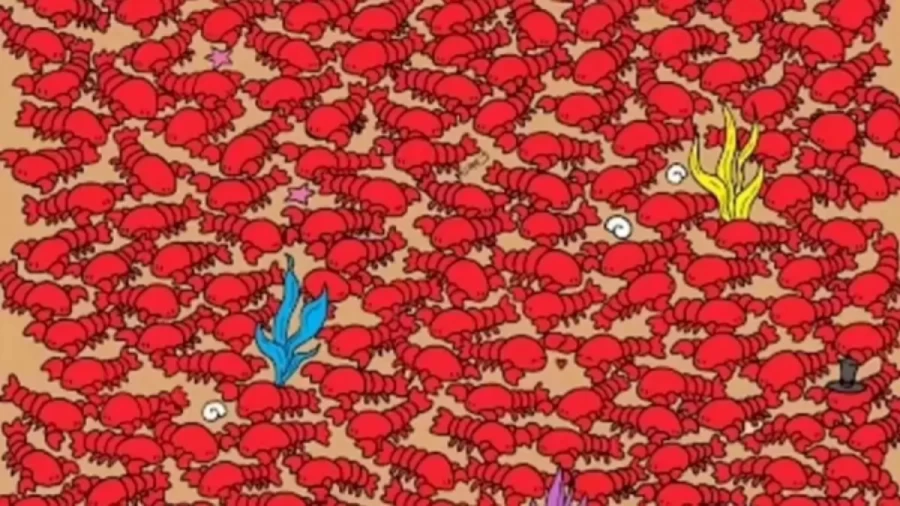The science behind optical illusions
When people hear the term “optical illusion,” they may ask for its precise definition. Essentially, an optical illusion occurs when an object appears differently than it actually does. There are many types of optical illusions, such as literal optical illusions created by combining multiple images. Physiological illusions prompt people to perceive image elements that are not present, while cognitive illusions exploit one’s assumptions about the world to create visual illusions. This written work also includes special optical illusions used to test eyesight. Without further ado, let’s get started.
- Optical Illusion Brain Test: If you have Sharp Eyes Find the number 6968 in 20 Secs
- Optical Illusion Brain Challenge: If you have Hawk Eyes Find the Number 675 in 15 Secs
- Optical Illusion Visual Test: If you have Eagle Eyes find the Odd Camel in 18 Seconds
- Observation Skills Test: Can you find the number 0704 among 0104 in 17 seconds?
- Optical Illusion Brain Challenge: If you have 50/50 Vision Find the number 710 in 12 Secs
What are the different types of optical illusions?
Optical deception is a mesmerizing and fascinating perceptual phenomenon that tricks our brain processes into perceiving something that is not actually there, or interpreting something differently than it actually is. There are a range of different categories of optical illusions, each with its own unique characteristics and properties.
You are watching: Optical Illusion Find and Seek: Only Hawk Eyes Can Find the Hidden Four Tiny Crabs Among the Lobsters in 15 Secs
- The first type is a geometric illusion, which uses shapes and patterns to create the illusion of depth, movement, or distortion. These illusions affect the brain’s perception of spatial relationships and depth.
- The second type is ambiguous illusions, which are characterized by images that can be interpreted in multiple ways, leading to confusion or uncertainty about what is being seen. This type of illusion tests the brain’s ability to accurately interpret visual data.
- The third type is color illusion, which uses the effects of color and light to create the impression of motion, depth, or contrast. These illusions are intrinsically linked to color theory and can elicit a wide range of emotional responses.
- Motion illusion is a fourth type that manipulates the perception of motion in static images, creating the impression of movement or activity. The mind’s ability to distinguish movement from stillness is a core element of these hallucinations.
- The fifth type is a tactile illusion, which uses texture and touch to create the impression of depth, shape, or movement. These illusions exploit the brain’s complex sensory processing systems to produce vivid and realistic sensations.
- Perceptual illusions are the sixth type and create the impression of a different size, shape, or color than the actual physical characteristics of the object. This illusion tests the limits of the brain’s ability to perceive and interpret visual stimuli.
- The flicker illusion is a seventh type that gives the impression of movement or change through the use of rapidly flashing images or colors. These illusions explore the brain’s susceptibility to motion sickness and other forms of visual disorientation.
- Finally, the afterimage illusion, the eighth type, creates the illusion that an image or color remains in the field of vision after it has been removed. These illusions demonstrate the way the brain processes and stores visual information.
Optical illusions occur in many forms of media, including art, advertising, and entertainment. They provide a fascinating way to delve into the workings of the brain and perception, allowing for a deeper understanding of the relationship between the senses and cognition.
trend
Four little crabs optical illusion
Is reality just an illusion? Your visual system is a wonderful mechanism that works in perfect synchrony with your brain to create the world you perceive. Sometimes, however, your eyes can deceive you. Although your brain controls your entire nervous system, your eyes can sometimes trick your brain into perceiving things as something other than what they seem.
Now, let’s delve into the optical illusion of four tiny crabs and test your cognitive acuity by identifying the elusive crustacean. Optical illusions like these are a great tool for stretching your mind and prompting you to think beyond the obvious.
Observing optical illusions can enhance your cognitive and observational skills, and this particular optical illusion is a fascinating exercise in honing those skills. If you manage to identify the four little crabs in the image, you’re an astute observer. Take a look at the illustration below. What do you think? Can you find four little crabs?

Where are the four little crabs in this optical illusion?
This visual anomaly may seem daunting, but with a little concentration, one can identify four tiny crustaceans. Few were able to identify the four tiny crustaceans after initial observations. In fact, understanding the image itself can take a lot of time.
Therefore, please note the instructions depicting four tiny crustaceans located within the depicted area. Isn’t digging for hidden objects an enjoyable activity? There are many unprecedented visual anomalies. To try out more similar illusions, peruse our website!

Disclaimer: The above information is for general information purposes only. All information on this website is provided in good faith, but we make no representations or warranties, express or implied, as to the accuracy, adequacy, validity, reliability, availability or completeness of any information on this website.
Source: https://truongnguyenbinhkhiem.edu.vn
Category: Optical Illusion
